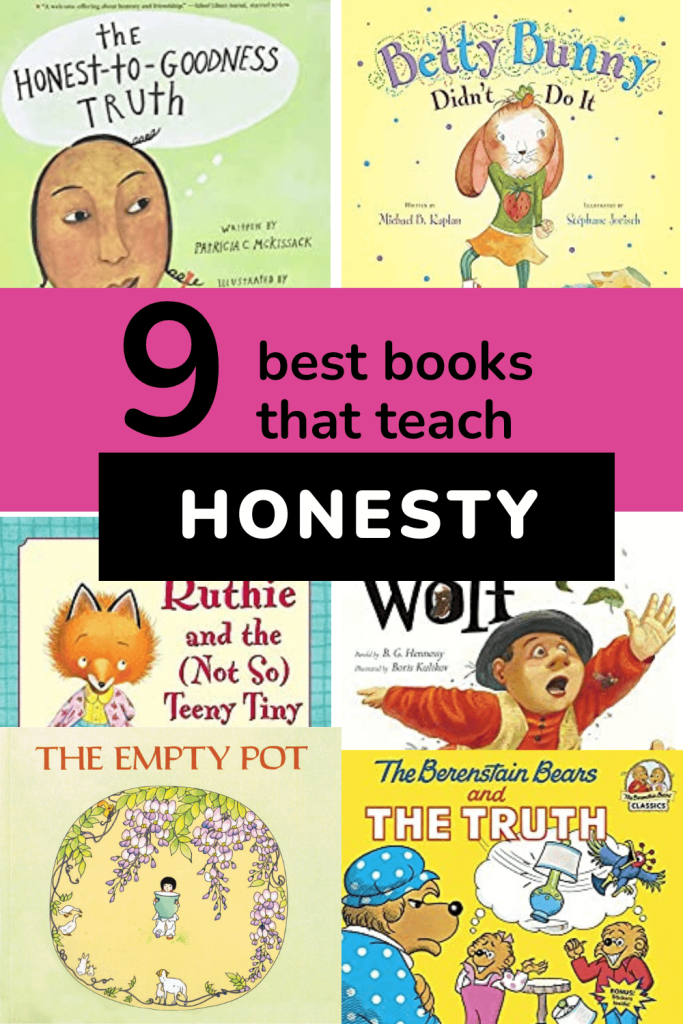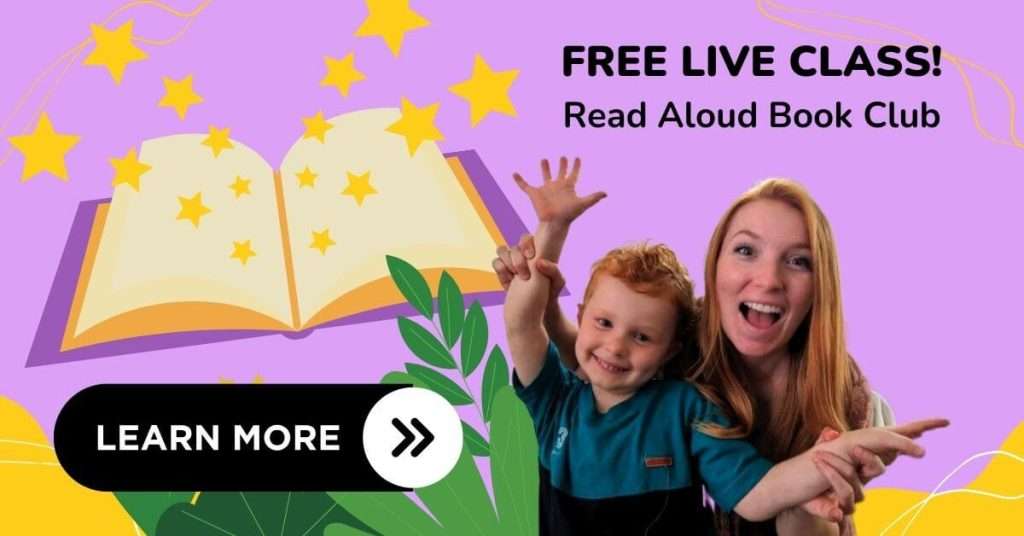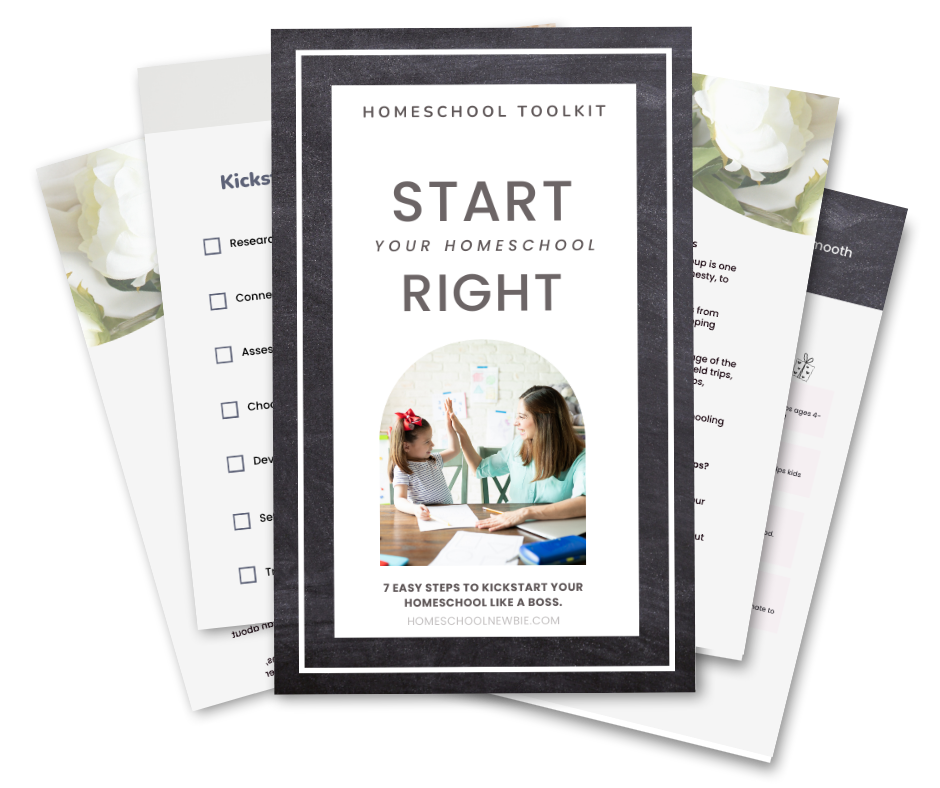In this blog post, you’ll not only find the best children’s books about honesty, but you’ll also be inspired with fun companion activities that you can use to teach your children the importance of honesty!
Recently, I’ve been thinking about my preschool-aged son who is currently experimenting with telling fibs when he gets himself into a predicament.
I know that teaching my son about honesty at an early age is essential but I’ve been struggling to know how to explain such an abstract concept to someone so young!

As an Amazon Associate, I earn from qualifying purchases. Some of the links in this post are affiliate links, which means if you click on the link and make a purchase, I may earn a commission. This commission comes at no additional cost to you and is how I am able to create more amazing content for you. Thank you for your support!

As a teacher and homeschool mom, I’ve discovered that one of the best ways to teach your children about honesty is through stories.
So I set off to the library to find the best children’s books about lying, honesty and other social emotional books out there!
Below, I have put together my favorite list of the best children’s books about honesty AND exciting honesty activities that you can do with your kiddos.
Start digging in!
Table of Contents

“The Empty Pot” by Demi
The empty pot read aloud is about a Chinese emperor who is looking for someone to replace him as emperor. He challenges all the children in the land to grow a flower. Each child receives a seed and by the end of the year, the child who grows the best plant gets to be the next emperor. A small boy named Ping is excited by the challenge and puts his heart into caring for the seed but it never grows. When it was time to present his plant, all of the other children had magnificent flowers except Ping. Because of Ping’s honesty he received the best gift of all.
Lesson Activity: Plant your own seeds
As you read the story, plant your own seeds in a pot and discuss the importance of honesty. Encourage your children to share their own experiences of being honest. Think about how they can apply the lessons from the book in their own lives.

“The Berenstain Bears and the Truth” by Stan and Jan Berenstain
This story on honesty is about Brother and Sister bear who decide to play soccer inside while Mama Bear is gone. They accidentally break their mother’s lamp and quickly think of a lie. Momma bear came home and they tried to tell her a lie about what happened. The more they tried to repeat the lie, the harder it was to retell. They tried to make up for the accident by gluing the lamp back together but they learned that trust is something that cannot be glued back together once it is broken.
Lesson Activity: Torn heart
This activity shows how lying can hurt others and how it leaves a mark on us.
Have the children draw or decorate a paper heart with their best effort. Once they have completed their hearts, tell them a statement that is a lie. Each time they hear a lie, they crumple or tear a piece off their heart. Explain to your kids that they could try taping or gluing the heart back together but you can still see the damage that was done. Discuss how this is similar to how lying can hurt our hearts as well as those we lie to.

“Franklin Fibs” by Paulette Bourgeois
Franklin wanted to impress his friends with a lie about how he could swallow 76 flies in the blink of an eye. Although this was impressive to his friends, Franklin got caught in the lie when he had to prove the lie. He tried to cover up his lie with more lies and excuses. After talking with his parents, he decided to tell the truth and then show what he actually could do.
Lesson Activity: Honesty puppet show
Create a puppet show where your child acts out this story or another story that is about honesty. Act out the puppet show for the family then discuss how the characters in the story chose to be honest or not.

“Ruthie and the (Not So) Teeny Tiny Lie” by Laura Rankin
Ruthie loved everything tiny. One day she found a teeny tiny camera that she fell in love with. She enjoyed playing with the camera until she came across the true owner of the camera. She told a teeny tiny lie to try to keep the camera but found that even small lies can have a big impact on how we feel inside.
Lesson Activity: The Telephone Game
This game shows the effect that even small lies or tweaks to the truth can have a big impact over time.
In this game, players whisper a phrase or word to the next player, and it continues around the circle. The last player has to say the word or phrase out loud, and the group can compare it to the original to see how it may have changed.

“Liar, Liar, Pants on Fire” by Diane deGroat
Although Gilbert is excited that he was assigned the part of playing George Washington in his school play, he was nervous he would make a mistake and embarrassed himself. He practices his parts many times before the big day. Just before the play begins, Gilbert misplaced his George Washington hat. He blames his classmate and they argue which causes a scene. They call each other liars until they discover the true location of the hat and realize the importance of honesty and forgiveness.
Lesson Activity: Lie and Truth Hop
This game helps your child understand the basic difference between a lie and the truth.
Start the activity by drawing a line with chalk, string or tape on the floor. Label one side of the line with “Lie” and the other with “truth”. Tell your children simple statements that are either a lie or the truth such as “I have 5 arms” or “I’m taller than a mouse”. When your children hear the statement, they must decide what side of the line to stand on based on if they think the statement is a truth or a lie.

“The Honest-to-Goodness Truth” by Patricia McKissack
This is a story about a young girl named Libby who struggles with telling the truth. She thinks that telling the truth can hurt people’s feelings, so she makes up stories to avoid hurting anyone. However, as her lies become more elaborate and cause more trouble, with the help of her grandmother she realizes the importance of honesty. However, Libby becomes a little too honest with her friends and neighbors to the point of hurting their feelings. When she talks with her mother, she learns to tell the truth in the right time and with tact so she can maintain healthy relationships with those around her. The book emphasizes the importance of honesty, even when it may be difficult, and the positive outcomes that come with it.
Lesson Activity: Truth or Lie game.
This game illustrates that It can be hard to believe the things that people say to us when we don’t trust them.
Play a game where each person takes turns telling a story or fact, and the others have to guess if it’s true or a lie. Afterward, discuss the importance of being truthful and how it feels to be lied to.

“Betty Bunny Didn’t Do It” by Michael Kaplan
The story follows a mischievous bunny named Betty, who is known for her wild antics and tall tales. One day, Betty is accused of breaking a lamp and insists that she didn’t do it, but her family doesn’t believe her. She becomes determined to prove her innocence and goes to great lengths to do so. Along the way, Betty learns the importance of honesty and taking responsibility for her actions, ultimately confessing to breaking the lamp and apologizing to her family.
Lesson Activity: The Honesty Well
This activity shows students that covering up a lie isn’t the best solution.
Fill a small bin with water and drop a nickel inside. Tell your children that the nickel represents a lie and that their goal is to cover the nickel up with pennies. Have them drop a penny in without touching the water. Each penny represents an attempt to cover up a lie. Your kids will discover that as they drop pennies in the water, it is very hard to cover up the nickel. Discuss how like the nickel, covering up a lie requires more lies. Ask them to discuss ways they could be honest instead of trying to cover up a lie.

“A Big Fat Enormous Lie” by Marjorie Weinman Sharmat
A little boy named Tommy lied about eating cookies and regretted it when his family was upset. Now he was caught stuck in his lie and couldn’t seem to be rid of it. A monster representing his lie followed him throughout the book and grew bigger and bigger. It wasn’t until Tommy talked to his parents about his lie that his monster disappeared.
Lesson Activity: I take it back
This game shows kids that once you tell a lie, it is difficult to take it back.
Give your children a piece of candy and tell them to eat it. Once the candy is gone, then tell your children to give the candy back. When they become confused, tell them that like the candy they ate, a lie is hard to reverse. Discuss why it is important to be honest.

“The Boy Who Cried Wolf” by B. G. Hennessy
A comical twist on the classic fable about a shepherd boy who lies to the village about a wolf threatening the sheep. The boy repeats this lie to the village one two many times. The village no longer believes him. This becomes a problem when three wolves actually come to eat the sheep. The boy is left to try to find his sheep on his own because no one believed him.
Lesson Activity: Honesty role-playing.
This activity helps your child visualize and practice telling the truth and learn to relate honesty to their life.
Have your children act out different scenarios where they have to decide whether to tell the truth or not. Have your child come up with alternative endings to the story where the characters decided to be honest instead of lie. Afterward, discuss the importance of honesty and how it can affect their relationships with others.
Conclusion: 9 Best Children’s Books About Honesty
I hope you enjoyed these picture books about lying as much as my son and I did! Teaching our children about honesty is an important part of life yet can be made simple through storytelling and family activities!
What’s Next?
Now that you’ve got honesty down, you may want to check out my other blog post with the ultimate list of social emotional learning books that will teach your kids about crucial social and emotional skills!
Also don’t forget to grab your Homeschool Kickstarter Toolkit with 7 easy steps to starting your homeschool on the right foot!

Hi, I’m Courtney! I’m the founder of homeschoolnewbie.com. I’m a former elementary school teacher turned homeschool mama who has a passion for home education! I have 10+ years of experience working with children in all kinds of educational settings. As a new homeschooling parent, my mission is to navigate the world of homeschooling and share with you the best home education practices. If you want to learn more about me, check out my about page. See you there!


